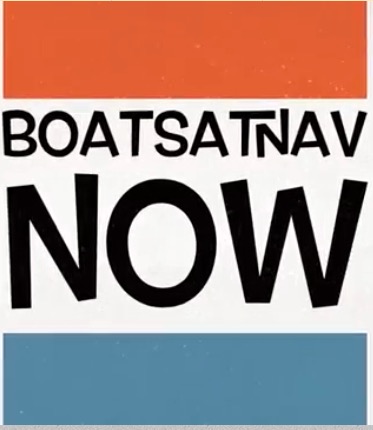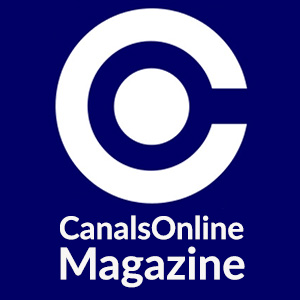Canal & River Trust Annual Public Meeting 2018
You may have seen Andy Tidy’s (Boating Business representative on the CRT Council) bullet point exposition of this year’s Canal & River Trust Annual Public Meeting in Birmingham (captainahabswaterytales.bogspot.com). As there is no hope that I could improve on this and rather than waste time simply repeating the information, my report will try to give an impression of the flavour of the meeting.
Andy has done a sterling job boiling down the information to his key points because the amount of information provided was huge. I guess much of it must come from CRT Trustee’s Annual report 2017/18. This document extends to 115 pages with much of it focusing on financial detail so it was a relief to find that the meeting had been crafted to appeal to users and I found it interesting and even enjoyable. Even so, there was still lots of information on finance but it was delivered in an accessible way, and was followed by interesting presentations on mooring strategy, hydrology and the impact of the dry summer, health and safety, and of course the new branding exercise.
You may not want me to say this, but up there on the big screen the new CRT logo looked great. Set beside the much loved old bridge logo, the new logo has already made sufficient impact to make this look quaint and dated. Love that new logo or hate it, it was clear to me that things have moved on so much that the old logo already looks like history!
Apart from the amount of water in the canals this summer and, set against the background knowledge gained from your own personal experience that there are bits of the system where drooping orange hazard tape seems to have taken root, all the reports made you feel encouraged, that the situation was improving and that things were looking good for the waterways.
At last year’s meeting we heard about the steps being taken to develop CRT’s new waterways and well being strategy. I can remember leaving the meeting feeling buoyed up. Rather than chugging down the canal worrying about how the heck CRT were going to keep this old system running, I realised that this strategy promised an injection of fresh energy, more users and new visitors to the towpath. From a roving trader’s point of view this could only be good news. An invigorated towpath means more people using it and more people means more sales.
At this year’s meeting, my strong impression was that a page has definitely been turned. It has taken five years to get to this stage but I would say the transition phase is now definitely over. These people at CRT now seem to know exactly what they want to do. They’ve sorted out the strategy, adjusted their business model and resources to achieve it, they’re all on message, and from now on it is all about putting the plan into operation. And the future focus of this plan? It fell under these six headings: delivering the service, caring for the waterways, improving investment and income, delivering wider outcomes and public benefits (the wellbeing outcomes), growing support and influence, developing the trust to become more diverse and agile. Or put more simply, creating a national treasure that is relevant to the future.
Throughout the presentation the team were upbeat, confident and not at all defensive. They appeared determined to address issues in a collaborative way. The default position was ‘let’s talk about this’ and to be active rather than pretend there is not a problem.
Did the questions from the audience seemed to reflect this positive mood? I’m not sure but the tone was different. In previous years it was almost certain that somebody would stand up and rant on in a high dudgeon about offside vegetation (and I don’t like it myself) until the microphone had to be wrestled from their grasp by a junior member of the CRT staff. This year the questions seemed more diffident, searching for a way forward rather than demanding an immediate answer there and then. But I did notice something quite significant. In previous years it was the boaters who asked the awkward questions. This year it was boaters, plus rowers, plus canoeist, plus fishermen, the chaplaincy and then there were the questions about speeding cyclists. Encouraging more people to use the canals isn’t going to make CRT’s job any easier that’s for sure!
My conclusions: CRT is now going to be under pressure from many different users; CRT wants to talk and we need to be part of this conversation. The role of the association over the near future is to find a way to become part of this conversation and to be heard. Otherwise I fear the requirements of roving traders may be forgotten in favour of much stronger voices.
Andrew Mills
CRT/RCTA Liaison








































































 IWA Canalway Cavalcade 2025
IWA Canalway Cavalcade 2025 RCTA Startops May Day BH Floating Market at Marsworth
RCTA Startops May Day BH Floating Market at Marsworth Norbury Canal Festival 2025
Norbury Canal Festival 2025 RCTA Burton on Trent May Day BH Floating Market
RCTA Burton on Trent May Day BH Floating Market RCTA Willington Floating Market
RCTA Willington Floating Market RCTA Berkhamsted Floating Market
RCTA Berkhamsted Floating Market Moira Canal Festival
Moira Canal Festival The Batchworth Rally
The Batchworth Rally RCTA Boxmoor May Spring BH Floating Market
RCTA Boxmoor May Spring BH Floating Market RCTA Fazeley Junction BH Floating Market.
RCTA Fazeley Junction BH Floating Market.



Comments are closed.